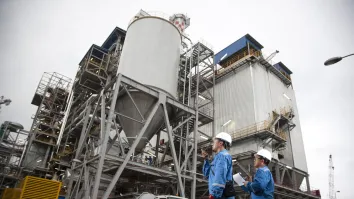
Domestic cooling spurs Chinese energy firms to expand global footprint
Meanwhile, authorities are coordinating self-regulation pacts with producers to avoid a race to the bottom on prices.
The cooling of its domestic market is pushing China to expand its renewable energy investments overseas.
“New government regulations are supportive, including the recently released ‘green power direct connection' policy to help Chinese manufacturers meet the EU’s Carbon Border Adjustment Mechanism requirements,” Wood Mackenzie said in a new analysis.
“China’s leaders choose their words carefully, and 'high quality production' is now the mantra for its clean power manufacturers,” it added.
China wants to be number one not only in the scale of its manufacturing and installed capacity but also in its technological leadership across wind, solar and energy storage.
Earlier, China’s President Xi Jinping announced the state’s increased wind and solar installations target to 3,600 gigawatts by 2035, equal to 42% of the global total by that point.
“Whilst the number is huge, it is a relatively modest goal given the pace of growth to date. It also signals a pivot from quantity to quality,” Wood Mackenzie said.
The experts said Beijing is currently working with domestic solar, wind and energy storage manufacturers on “self-discipline agreements” to prevent a race to the bottom on prices.
China’s new installations are expected to continue to outpace the rest of the world, with solar expected to account for more than 50% of global capacity additions this year.
“Reforms are already having an impact, however, leading to a temporary slowdown in the pace of new solar installations as investors and manufacturers adjust their revenue strategies towards a more liberalised power market,” the analysis said.
“And if this means less-competitive companies exit the market, the message from the Chinese government appears to be ‘so be it’,” it added.
Meanwhile, gas remains the highest-cost option across China’s power mix, whilst battery costs have dropped by over 50% in the last three years, and its 42 GW of grid-connected energy storage additions last year were double that of gas power in 2024.
“China’s gas power generation share of output has remained broadly flat in 2025 as energy storage eats into gas’s market share. The global LNG industry should take note,” Wood Mackenzie said.

















 Advertise
Advertise








